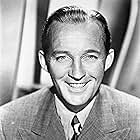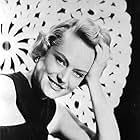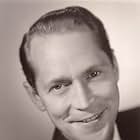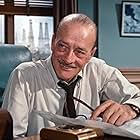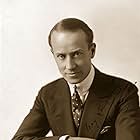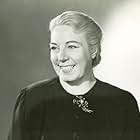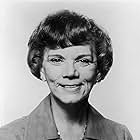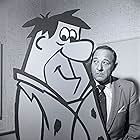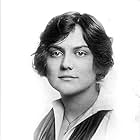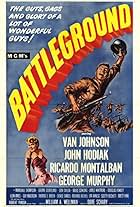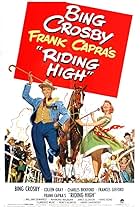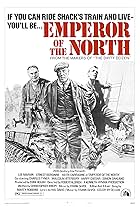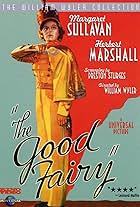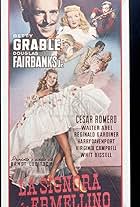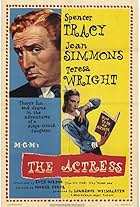VALUTAZIONE IMDb
6,3/10
1214
LA TUA VALUTAZIONE
Aggiungi una trama nella tua linguaForeign correspondent Pete Garvey has 5 days to win back his former fiancée, or he'll lose the orphans he adopted.Foreign correspondent Pete Garvey has 5 days to win back his former fiancée, or he'll lose the orphans he adopted.Foreign correspondent Pete Garvey has 5 days to win back his former fiancée, or he'll lose the orphans he adopted.
- Vincitore di 1 Oscar
- 1 vittoria e 3 candidature totali
Jacques Gencel
- Bobby
- (as Jacky Gencel)
Trama
Lo sapevi?
- Quiz"In the Cool, Cool, Cool of the Evening" was the fourth song performed by Bing Crosby in a film that went on to win the Academy Award for Best Song.
- BlooperWhen Winifred seeks shelter in Garvey's home, George is on the phone. In a close-up, the phone is to his ear, but in the next medium shot, the phone is hung up, and he picks up the receiver again.
- Citazioni
Husband on Airplane: [Complaining about fellow passenger Bing Crosby's singing on plane] Oh... There they go again ! Don't these actors ever stop making noises?
Wife on Airplane: They're USO people. They sing for soldiers.
Husband on Airplane: Soldiers can shoot back. They've got guns.
- ConnessioniFeatured in Paramount Presents (1974)
- Colonne sonoreMisto Cristofo Columbo
Written by Ray Evans and Jay Livingston
Performed by Bing Crosby, Dorothy Lamour, Louis Armstrong, Cass Daley,
Phil Harris, Frank Fontaine
Recensione in evidenza
This film is never considered one of Frank Capra's best, but that shouldn't keep potentially interested viewers from seeing it. On its face, it doesn't seem to be what has come to be known as a Capra film because it isn't issue-laden and doesn't really make a point other than the "follow your heart" admonition that most romantic comedies invoke. In many ways, it's a remake of Capra's "It Happened One Night" (1934), and while it doesn't have the financially and emotionally gut-wrenching backdrop of the Depression to give it the weight of the original, it's nonetheless pleasant and clever.
To appreciate "Here Comes the Groom" is to embrace a bunch of disparate parts. First and foremost, this is a Bing Crosby film, replete with seemingly ad-libbed asides that filled the Hope/Crosby "Road" pictures. Bing, who plays a newspaper reporter (one of Capra's favorite devices) but basically plays himself, has as his foil not just one but three adult characters (his editor, his would-be father-in-law and his romantic competitor), plus a passel of kids, in particular a French boy and girl whom he has virtually adopted as his own. The two kids are cute and genuinely good-natured, so when they are on screen, as they often are, they light up the place. Their repeated mimicry of the Crosby character's signature farewell gesture -- a tooth-filled smile and open-fingered hand wave -- never fails to please (except for the final time, in the film's closing seconds, in which it appears that the duo is starting to run out of steam).
Jane Wyman is a strong presence in the film as well, and quite appealing as someone torn between an elusive true love and the biological clock. She is every bit the musical equal of Crosby in their imaginatively choreographed presentation of the movie's theme song "In the Cool, Cool, Cool of the Evening," staged in various parts of a huge office, then down a half-dozen floors in an elevator and out to the street.
Franchot Tone is the other big name among the actors, and he plays his role as Wyman's rich fiance with characteristic aplomb. Nothing seems to rattle Tone's character, even the possibility of losing Wyman, which may be part of the film's "follow your heart" message.
Easily outshining Tone is Alexis Smith, who never received the career-making, starring roles that she deserved. She plays a caterpillar whom Crosby, in his own strategic interest, turns into a butterfly, and while Crosby's tutelage is over-the-top sexist by today's standards, her transformation and resulting passion are eye-popping, for the Tone character and his staid relatives as well as for the viewer.
With such stong characterizations and actors, Capra for some reason decided he needed something more, so he threw in a grab bag of other elements. Before Crosby and his two adoptees fly back to the States, there's an extended operatic solo by the quite young and show-stopping Anna Maria Alberghetti. And when Crosby and the youthful pair finally get on the plane, they happen to sitting next to a group of USO entertainers, so of course there's a song, "Cristofo Columbo," which brings in fleeting contributions by Louis Armstrong, Frank Fontaine, Dorothy Lamour and Phil Harris. These are tangents, to be sure, and they make the viewer wonder momentarily if Capra has lost his narrative thread, but they don't last long and are engaging in their own right. (Perhaps the "Cristofo Columbo" scene is supposed to echo the "Man on the Flying Trapeze" scene from "It Happened One Night.")
Those looking for further Capra touches will be warmed by the brief appearances of H.B. Warner (the judge in "Mr. Deeds," a senator in "Mr. Smith" and Mr. Gower in "It's a Wonderful Life"), Charles Lane (Potter's real-estate man in "Wonderful Life") and Charles Halton (bank examiner in "Wonderful Life"). The cinematography in this film is serviceable, but there are frustrating instances of sloppiness. At one point, in a reaction shot, the camera mysteriously lingers on Crosby's editor as he does nothing for about five seconds. It's an inconsequential flub, but it feels long enough to make the viewer wonder if the film's cutter and Capra himself just went to sleep. (It's reminiscent of a similar and even longer gaffe in Capra's "You Can't Take It with You" from 1938.)
A more egregious example of visual inattention comes during a physical argument between the Wyman and Smith characters. For the actual fight, in which the two flip each other over with quick arm twists, it's all too obvious that stunt doubles are used. The doubles' faces, which look nothing like those of the two actresses (they may even be men), are repeatedly shown, and the hair color and length of the Smith double doesn't come close to matching the hair of Smith. Who was minding the store when this was shot? It's the kind of mistake that makes all kinds of viewers, not just movie buffs, roll their eyes.
To its credit, the film does lay out, in albeit cliche form, the reality of class differences. But both rich and not-so-rich are given gentle appreciative treatment. Clearly, the viewer is supposed to side with the more down-to-earth characters of Crosby and Wyman, but the rich are not cardboard villains, either. It's almost as if the message is that there is a time and place (and hope) for people from all walks of life.
"Here Comes the Groom" (a clever title in itself) is a product of the pop culture of its time; it's all-white (save for Armstrong), and traditional gender roles hold sway. But look beyond that and you will find a film that you probably didn't know you would like so well. Crosby, as top comic banana, plays his likeable persona perhaps better than ever, and the film leaves lots of smiles in its wake. The ending may be predictable, but this is a movie in which it's just fun to see the character-based twists and turns that steer the plot to its conclusion.
To appreciate "Here Comes the Groom" is to embrace a bunch of disparate parts. First and foremost, this is a Bing Crosby film, replete with seemingly ad-libbed asides that filled the Hope/Crosby "Road" pictures. Bing, who plays a newspaper reporter (one of Capra's favorite devices) but basically plays himself, has as his foil not just one but three adult characters (his editor, his would-be father-in-law and his romantic competitor), plus a passel of kids, in particular a French boy and girl whom he has virtually adopted as his own. The two kids are cute and genuinely good-natured, so when they are on screen, as they often are, they light up the place. Their repeated mimicry of the Crosby character's signature farewell gesture -- a tooth-filled smile and open-fingered hand wave -- never fails to please (except for the final time, in the film's closing seconds, in which it appears that the duo is starting to run out of steam).
Jane Wyman is a strong presence in the film as well, and quite appealing as someone torn between an elusive true love and the biological clock. She is every bit the musical equal of Crosby in their imaginatively choreographed presentation of the movie's theme song "In the Cool, Cool, Cool of the Evening," staged in various parts of a huge office, then down a half-dozen floors in an elevator and out to the street.
Franchot Tone is the other big name among the actors, and he plays his role as Wyman's rich fiance with characteristic aplomb. Nothing seems to rattle Tone's character, even the possibility of losing Wyman, which may be part of the film's "follow your heart" message.
Easily outshining Tone is Alexis Smith, who never received the career-making, starring roles that she deserved. She plays a caterpillar whom Crosby, in his own strategic interest, turns into a butterfly, and while Crosby's tutelage is over-the-top sexist by today's standards, her transformation and resulting passion are eye-popping, for the Tone character and his staid relatives as well as for the viewer.
With such stong characterizations and actors, Capra for some reason decided he needed something more, so he threw in a grab bag of other elements. Before Crosby and his two adoptees fly back to the States, there's an extended operatic solo by the quite young and show-stopping Anna Maria Alberghetti. And when Crosby and the youthful pair finally get on the plane, they happen to sitting next to a group of USO entertainers, so of course there's a song, "Cristofo Columbo," which brings in fleeting contributions by Louis Armstrong, Frank Fontaine, Dorothy Lamour and Phil Harris. These are tangents, to be sure, and they make the viewer wonder momentarily if Capra has lost his narrative thread, but they don't last long and are engaging in their own right. (Perhaps the "Cristofo Columbo" scene is supposed to echo the "Man on the Flying Trapeze" scene from "It Happened One Night.")
Those looking for further Capra touches will be warmed by the brief appearances of H.B. Warner (the judge in "Mr. Deeds," a senator in "Mr. Smith" and Mr. Gower in "It's a Wonderful Life"), Charles Lane (Potter's real-estate man in "Wonderful Life") and Charles Halton (bank examiner in "Wonderful Life"). The cinematography in this film is serviceable, but there are frustrating instances of sloppiness. At one point, in a reaction shot, the camera mysteriously lingers on Crosby's editor as he does nothing for about five seconds. It's an inconsequential flub, but it feels long enough to make the viewer wonder if the film's cutter and Capra himself just went to sleep. (It's reminiscent of a similar and even longer gaffe in Capra's "You Can't Take It with You" from 1938.)
A more egregious example of visual inattention comes during a physical argument between the Wyman and Smith characters. For the actual fight, in which the two flip each other over with quick arm twists, it's all too obvious that stunt doubles are used. The doubles' faces, which look nothing like those of the two actresses (they may even be men), are repeatedly shown, and the hair color and length of the Smith double doesn't come close to matching the hair of Smith. Who was minding the store when this was shot? It's the kind of mistake that makes all kinds of viewers, not just movie buffs, roll their eyes.
To its credit, the film does lay out, in albeit cliche form, the reality of class differences. But both rich and not-so-rich are given gentle appreciative treatment. Clearly, the viewer is supposed to side with the more down-to-earth characters of Crosby and Wyman, but the rich are not cardboard villains, either. It's almost as if the message is that there is a time and place (and hope) for people from all walks of life.
"Here Comes the Groom" (a clever title in itself) is a product of the pop culture of its time; it's all-white (save for Armstrong), and traditional gender roles hold sway. But look beyond that and you will find a film that you probably didn't know you would like so well. Crosby, as top comic banana, plays his likeable persona perhaps better than ever, and the film leaves lots of smiles in its wake. The ending may be predictable, but this is a movie in which it's just fun to see the character-based twists and turns that steer the plot to its conclusion.
I più visti
Accedi per valutare e creare un elenco di titoli salvati per ottenere consigli personalizzati
- How long is Here Comes the Groom?Powered by Alexa
Dettagli
- Data di uscita
- Paese di origine
- Lingue
- Celebre anche come
- Here Comes the Groom
- Luoghi delle riprese
- Azienda produttrice
- Vedi altri crediti dell’azienda su IMDbPro
Botteghino
- Budget
- 2.117.000 USD (previsto)
- Tempo di esecuzione1 ora 53 minuti
- Colore
- Proporzioni
- 1.37 : 1
Contribuisci a questa pagina
Suggerisci una modifica o aggiungi i contenuti mancanti

Divario superiore
By what name was È arrivato lo sposo (1951) officially released in India in English?
Rispondi








